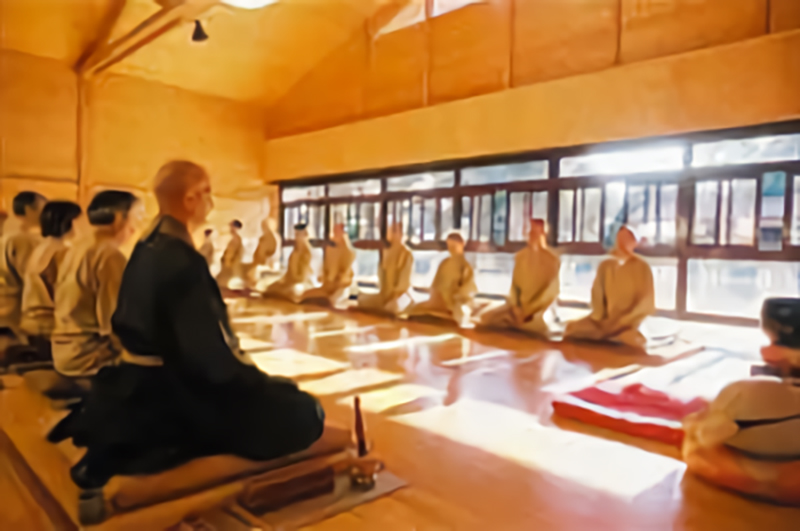Zen Buddhism is a school of Mahayana Buddhism that originated in China, as Chan Buddhism. Zen focuses on spiritual practice and the use of self-discipline, mindfulness, meditation (zazen), and dedication to understanding one's own "Buddha nature", in the hopes of attaining enlightenment. In the thirteenth century Zen Buddhism became deeply rooted in Japan and, as with Chan Buddhism, would develop into two main schools: Rinzai and Soto. Despite being distinct schools "Rinzai and Soto were not so much antagonistic rivals as they were different alternatives." (Bresnan 497) Springing from the same root stock these branches of Zen differ in ways that would appeal to different audiences in thirteenth century Japan, perhaps explaining the lack of antagonism. The fundamental differences between Rinzai and Soto includes the social class they appealed to when they became established in Japan and; more importantly, their specific meditative practices and how these practices helped to achieve enlightenment.
 |
| Portrait of Myoan Eisai (1141-1215), founder of Rinzai Buddhism in Japan |
Rinzai and Soto also differed in how meditation was performed and how these practices helped to achieve enlightenment. Rinzai was distinctly more "active", which may have been part of the appeal to the samurai. Rinzai would encourage meditative walks instead of constant sitting meditation, chanting was also a common part of meditative practices, and one may be struck during mediation to help refresh the body and potentially drive the meditator into a different level of awareness. "Zen holds that the so-called rational mind is incapable of solving an individual's deepest problem: his meaning to himself and to life." (Bresnan 480) Taking this to heart, Rinzai incorporated the use of koan while meditating. Koan are questions or riddles that can't be answered rationally. "The role of the koan exercise is to grapple with the rational mind, wrestle it to the floor and pin it there. Only then can consciousness break free from it's self-imposed prison." (Bresnan 481) By freeing the consciousness, Rinzai practitioners could then realize one's true nature and obtain a sudden enlightenment or satori.
 |
| Zazen in a dojo at the European Center of Zen Rinzai |
In contrast to Rinzai's active meditation, Soto Zen heavily focused on sitting meditation (shikantaza) without any form of distraction. "The meditator was to do one thing, and one thing only: he was to completely focus his consciousness on the existential reality of the moment, and stay with that." (Bresnan 496) For Soto Zen, this intensive, sitting meditation was the road to "seeing one's true nature". This method of striving for enlightenment may have been more accessible to the masses and those looking for a more contemplative practice.
| Dogen Zenzi, founder of Soto Buddhism in Japan |
While Rinzai and Soto came from the same foundation of Zen Buddhism, the two schools differed enough to appeal to distinct audiences. Rinzai with it's dynamic practices, heavily appealed to the ruling class and Soto, with it's intensely reflective focus, found footing in rural communities. Despite the difference, both schools found success in drawing students to Zen Buddhism in thirteenth century Japan. "From that time to the present, both have continued to grow and develop, and in modern times have begun to take root in places far beyond the borders of Japan." (Bresnan 497)
Works Cited
Bresnan, Patrick S. Awakening: An Introduction to the History of Eastern Thought. 6th ed., Routledge, 2018.
Comments
Post a Comment